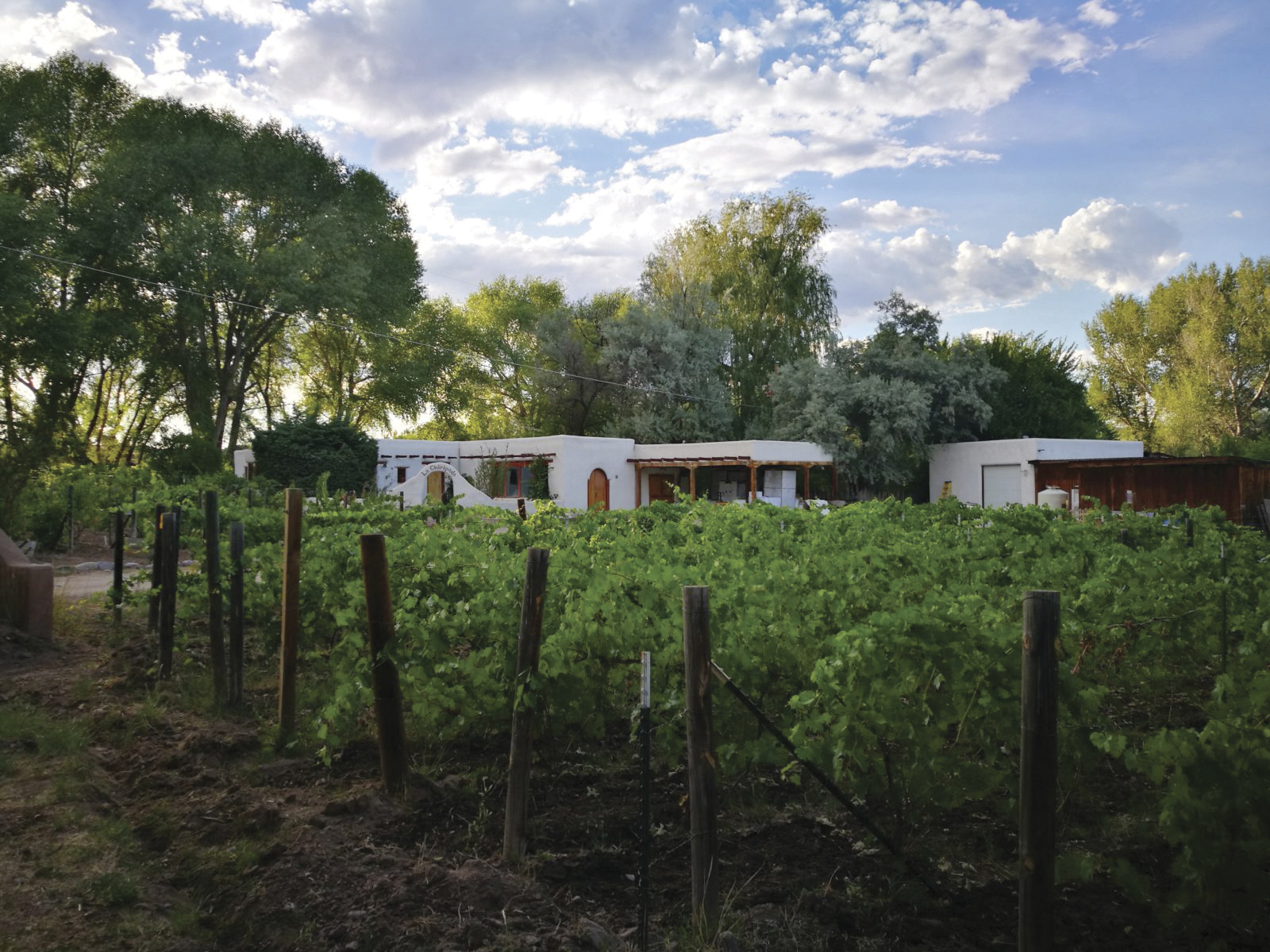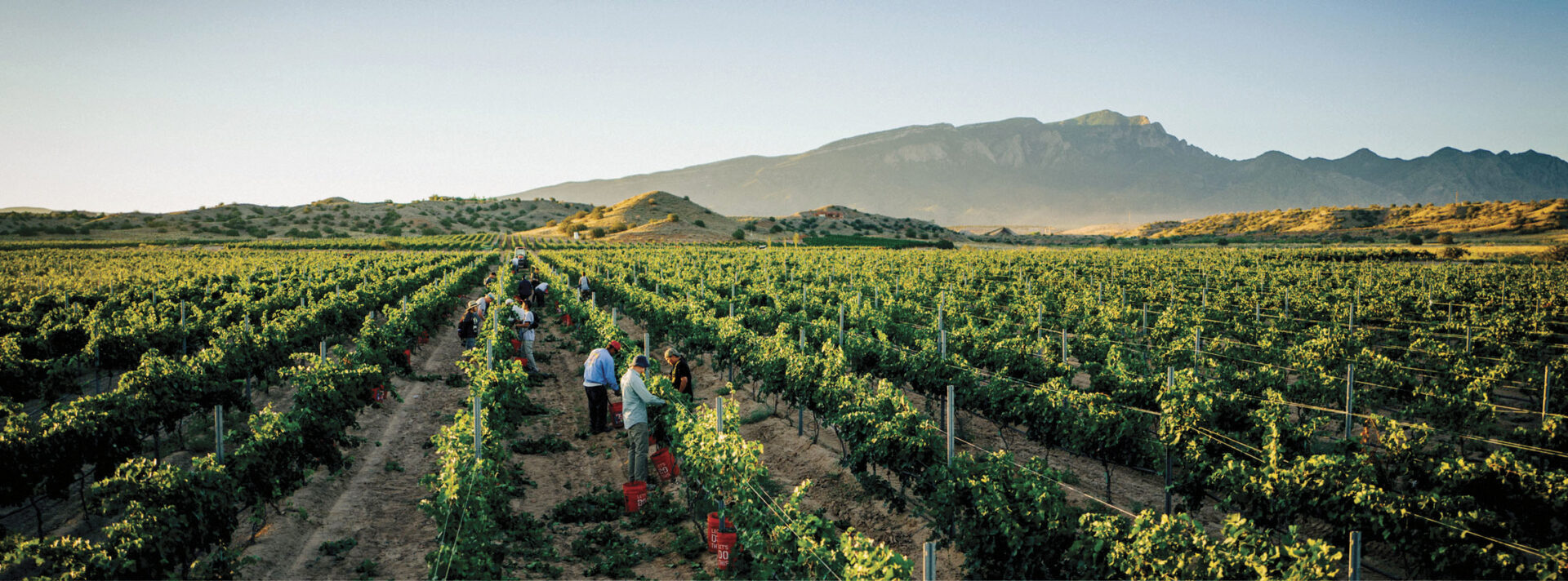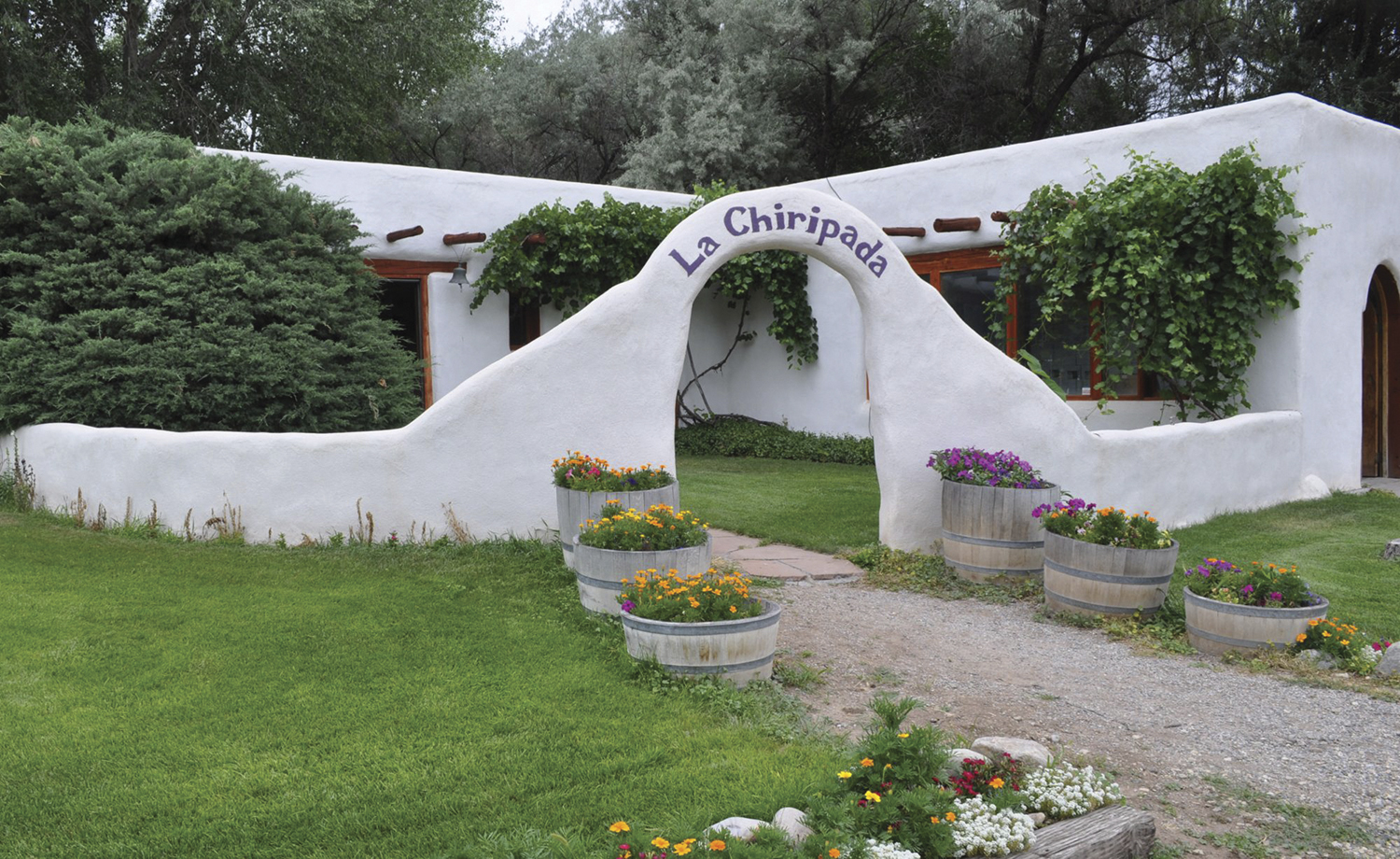New Mexico is no stranger to growing grapes. In fact, the first wine-growing grapes were planted in New Mexico almost 400 years ago by the Spanish in 1629 along the Rio Grande River. Today, this region has become the Middle Rio Grande Valley AVA, along with two other AVAs in the state: Mimbres Valley and Mesilla Valley.
History and Present Day
While the state saw significant setbacks in wine-growing due to Prohibition and a series of Rio Grande River floods, grape growing came back from its historical roots in the late 1970s. At present, there are 2,500+ acres of grape vines and 50 wineries; the state is also starting to rely on the wine industry as a viable source of tourism, and younger generations are working to transform their wines.
As with many wine-growing states who have worked to revive their wine-growing history in the last fifty years—like neighboring Texas and Arizona—New Mexico is seeing an uptick in interest from younger generations. Next-generation winegrowers and winemakers are working to better understand the land and combat its challenges, narrow down varieties better suited for the extreme growing conditions and elevate the quality of the state’s wine production. Such feats take time, and across estates, some producers are still working with a combination of non-New Mexico fruit in addition to a small percentage from their own and/or local vineyard sites.
AVAs and Terroir
When one thinks about New Mexico, the vision is a dry, hot, and barren landscape. Unfortunately, wine-growing is not exempt from these extreme conditions. While altitude is on their side and can be beneficial for growing certain varieties, frost and wind are enduring challenges across the state. And the abrupt seasonal shift from summer, nearly skipping fall, straight into the depths of an icy cold winter also brings its own set of drawbacks.
Middle Rio Grande Valley AVA is the historic wine-growing region in New Mexico and has been an official AVA since 1988. It’s located just south of Albuquerque and very high in elevation, ranging from 4,000 to 6,500 feet. Mimbres Valley AVA was established in 1985 in the southwestern part of New Mexico. Many compare the terroir and climate here to that of Mendoza, Argentina, with its high elevation and semi-desert topography. The Mesilla Valley is a tiny wine-growing region covering less than 50 acres and became an AVA in 1985. All three AVAs are home to a continental climate. Days are hot and nights are cool, with winter seeing below-freezing temperatures.
Grape Varieties
“We have a broad diversity of flavors in New Mexico, over 75 different grape varieties in the bottle, so it makes for a pretty broad offering,” stated Christopher Goblet, Executive Director of New Mexico Wine—a non-profit organization that was created in 1991 as the trade association for the winery and vineyards of New Mexico. Varieties include a range of Italian grapes, French classics like Cabernet Sauvignon and Chardonnay, and more obscure offerings such as Arneis, Mission, and Alfrocheiro. There’s a bit of everything, as young, eager winegrowers and winemakers are exploring varieties and still searching for New Mexico wine style.
As there seems to be a leaning towards sparkling wines, only time will tell if younger generations of winegrowers and winemakers can grow and craft purely New Mexico-made sparkling wines. But, for now, the limited offerings from New Mexico-grown grapes are worth getting to know, and the winemakers who are crafting sparkling from outside grapes are worth watching.
Wineries To Visit
Vara Winery & Distillery is in Albuquerque and is a great place to visit. Both a winery and a distillery, the estate celebrates the spirit of Spanish influence in New Mexico, paying homage through their line of Spanish-influenced sparkling wines and spirits. All their spirits are made in-house. Their extensive line of sparkling is crafted from grapes grown in Lodi, Monterey, and San Luis Obispo, as well as Spain. And they produce a handful of New Mexico-grown wine. Their Vina Cardinal is made from 100% New Mexico Listan Prieto grapes in a fortified, slightly off-dry style and works well as an aperitif. In true Spanish fashion, it’s best served alongside traditional anchovy-stuffed Spanish olives. // www.varawines.com
La Chiripada is New Mexico’s oldest winery, established in 1977 and situated in Dixon, about an hour north of Santa Fe. The estate produces a whole host of wines, including classics like Chardonnay, Merlot, and Cabernet Sauvignon, as well as sweet offerings and blends made from obscure grape varieties such as Léon Millot and DeChaunac for their Rio Embudo Red and Vidal Blanca and Seyval Blanc—among a couple of others—for their Winemaker’s Select white. With more than a dozen wines in their collection, La Chiripada is a good place to get to know New Mexico-grown grapes. // www.lachiripada.com
Gruet Winery is a sparkling house that sources fruit from their New Mexico vineyards and vineyards in California and Washington. The sparkling expressions are a blend of grapes from these regions, so there is no distinction in the number of grapes included from New Mexico. Still, it is promising that the estate is growing the varietals and including them in their sparkling lineup. Perhaps in time, there will be an entirely New Mexico-made sparkling wine. Gruet has two locations for tasting: one in Albuquerque and one in Santa Fe. // www.gruetwinery.com
Black Mesa Winery & Cidery is another fun estate that doubles as both a winery and a cidery. Their wine program focuses on New Mexico-grown fruit. It showcases traditional varietals and more creative offerings, such as the Abiquiu White made of Traminette and Seyval and the La Bajada Red, comprised of Baco Noir, Leon Millot, and Zinfandel. Their lines of Bite Me Hard ciders are made with 100% New Mexico apples and are sourced from neighboring orchards that range from 65-85 years old. // www.blackmesawinery.com





